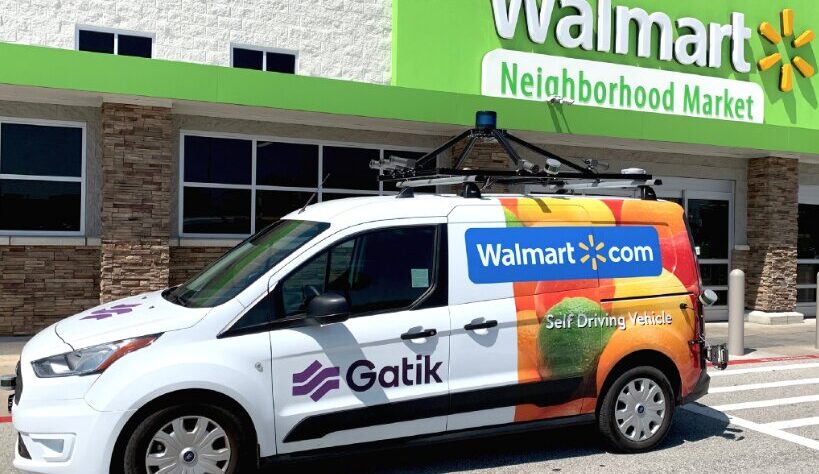“Our partnership with Walmart is a huge validation that commercialization and scalability of autonomous vehicles will happen in the B2B short or logistic space,” says Gatik AI CEO Guatam Narang. “Our autonomous vehicles will be moving goods for Walmart from one of their dock stores to their neighborhood markets in Bentonville, Arkansas. Think of our solution as filling the gap. We call it the middle mile. It’s hugely underserved and it’s a huge business opportunity for us.”
Guatam Narang, co-founder and CEO of Gatik AI, discusses their partnership with Walmart to test B2B self-driving delivery vans near their headquarters in Bentonville, Arkansas. Narang was interviewed on CNBC:
Walmart Launches Self-Driving Delivery Vans
Our partnership with Walmart is a huge validation that commercialization and scalability of autonomous vehicles will happen in the B2B short or logistic space. That’s what Gatik focuses on. Both of the companies are very excited about this. Gatik is focusing on scaling and commercialization of the autonomous vehicle technology. Think of our solution as filling the gap. We call it the middle mile. It’s hugely underserved and it’s a huge business opportunity for us.
We believe that while operating the vehicles back and forth on known routes we can over-optimize our algorithms to perfect these routes. This is a much more constrained environment. The promise of autonomy can be realized sooner than B2C delivery applications or other applications of autonomous driving technology like passenger transportation. With our application, we are focusing on introducing these vehicles without safety drivers before a B2C delivery application or a passenger transportation application does the same.
Autonomous Vehicles Moving Goods From Docks to Markets
We are actually the first company that is working with Walmart for this particular use case. What that means is we are not delivering anything to the end consumer. Our autonomous vehicles will be moving goods for Walmart from one of their dock stores to their neighborhood markets in Bentonville, Arkansas. With some of the other companies that Walmart is working with the focus is more on B2C deliveries.
Our focus is to move goods between businesses in an urban environment. The whole idea is let’s not try to change end consumer behavior. Let’s try to bring the promise of autonomous vehicles to businesses and help them save on operating cost in the near-term future.
Gatik Is Focusing Their Driverless Tech On the Middle Mile
Gatik is focusing on the middle mile. It’s filling the gap between long-haul trucking and the smaller sidewalk delivery robots. The middle mile is the most underserved segment of the whole supply chain. It is also the most expensive part of the whole supply chain. The reason to focus on this middle mile is to help our customers, which are businesses, help them save a lot on the operating cost. In addition to that, there is a huge shortage of drivers in this segment. With our solution, our customers can help fulfill. For us, it’s a huge validation. Right now all the testing and all the deployment is with the safety driver. The aim of the company is to take the driver off, scale the solution, and commercialize this technology. At scale, we are talking about saving up to 50 percent for our customers. The focus is to operate the vehicles on public roads.
When we talk about operating these vehicles between businesses, there are a lot of constraints that we can introduce. For example, very famously, FedEx and UPS trucks, they mostly take right turns because it’s more fuel-efficient for them. If we have something similar for our solution what that means is we wouldn’t have to worry about changing lanes. We wouldn’t have to worry about solving a very tricky situation in our space, that is unprotected left turns. As a company and as the solution we have a clear go-to-market strategy by installing or introducing some of these constraints. Not taking left turns is just one example, even though the technology stack can handle left turns, lane change, intersections, and traffic light navigation today.


